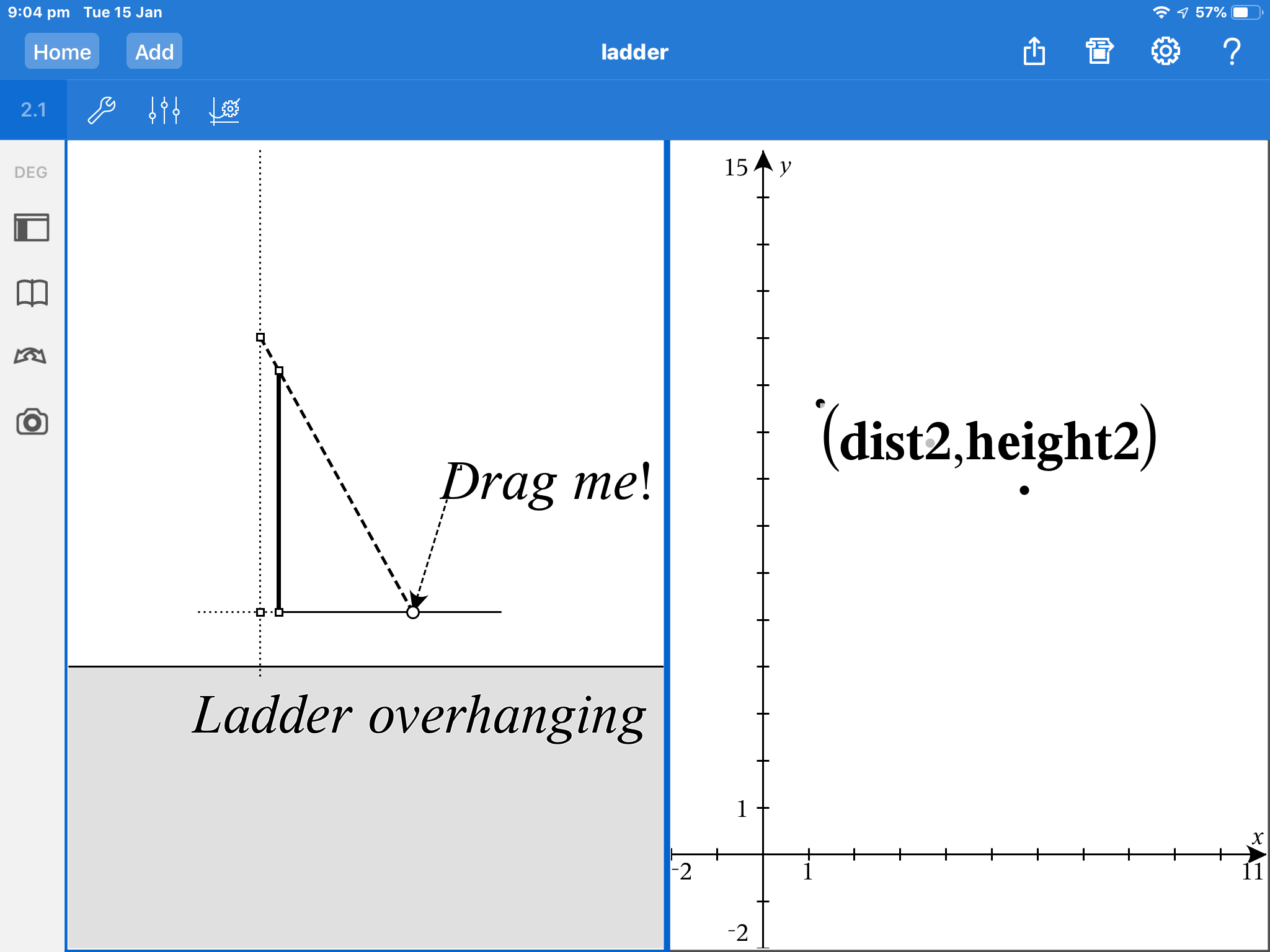Steve Arnold, 17/06/2006, Created with GeoGebra
This problem may also be modelled using CabriJr on the TI-83/84 series calculator. Click on the graphic below to download the file and try it yourself! Try having students work in pairs: one generating data points using the CabriJr model and the partner entering these into lists to plot and then to help build their algebraic model! |
And just wait until you try this with TI-nspire CAS! |
©2019 Compass Learning Technologies ← Live Mathematics on the Web ← GeoGebra Showcase


